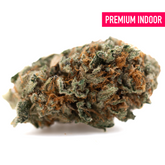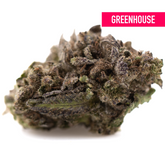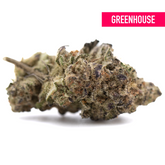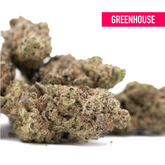What is THCA Trim? A Complete Beginner's Guide to Cannabis Trim
THCA trim represents one of the most accessible entry points into the world of hemp-derived cannabinoids. As cannabis cultivation has evolved, so has our understanding of valuable plant materials that were once considered waste products. THCA trim, the sugar leaves and smaller buds removed during the trimming process of THCA-rich hemp plants, offers consumers a cost-effective way to experience the benefits of this fascinating cannabinoid.
The cannabis industry has undergone a remarkable transformation over the past decade, with innovations in cultivation, processing, and product development creating new opportunities for consumers to explore different aspects of the plant. Among these developments, what is THCA trim has emerged as a question that many newcomers to the hemp world are asking. This comprehensive guide will walk you through everything you need to know about THCA trim, from its basic definition to its various applications and benefits.
Understanding THCA trim is essential for anyone looking to maximize their cannabis experience while maintaining budget consciousness. Whether you're a seasoned cannabis enthusiast or someone just beginning to explore hemp-derived products, this guide will provide you with the knowledge needed to make informed decisions about incorporating THCA trim into your routine.

What is THCA Trim?
THCA trim consists of the sugar leaves, small buds, and plant material removed during the manicuring process of THCA flower. Unlike traditional cannabis trim, THCA trim comes from hemp plants that contain high levels of tetrahydrocannabinolic acid (THCA) while maintaining delta-9 THC levels below 0.3% in compliance with federal hemp regulations.
The trim contains the same cannabinoids as the flower, including THCA, CBD, CBG, and various terpenes, though typically in lower concentrations. This makes THCA trim an excellent option for budget-conscious consumers or those looking to incorporate cannabinoids into homemade products.
To better understand what is THCA trim, it's important to recognize that this material is not simply plant waste. The trimming process in cannabis cultivation involves carefully removing excess plant material to enhance the appearance and quality of the final flower product. During this process, valuable cannabinoid-rich material is collected, creating what we know as trim.
Cannabis trim has been used for centuries by cannabis cultivators and consumers who recognized its potential value. The leaves closest to the buds, known as sugar leaves, are particularly rich in trichomes – the tiny, crystal-like structures that contain the plant's cannabinoids and terpenes. These sugar leaves, along with small buds and other plant material, form the bulk of what we call THCA flower trim.
The legal distinction between THCA trim and traditional cannabis trim is crucial for consumers to understand. Hemp trim derived from plants containing less than 0.3% delta-9 THC is federally legal under the 2018 Farm Bill, making it accessible to consumers across the United States. This legal framework has opened up new possibilities for consumers to explore cannabinoids like THCA in a compliant manner.
Types of THCA Trim
Understanding the different types of THCA leaf trim available is crucial for making informed purchasing decisions. Not all trim is created equal, and different types serve different purposes depending on your intended use.
Sugar Leaves: These are the small, trichome-covered leaves that grow closest to the cannabis buds. Sugar leaves are considered the highest quality component of cannabis trim because they contain the highest concentration of cannabinoids and terpenes. The name "sugar leaves" comes from their appearance – they often look like they've been dusted with sugar due to the high concentration of trichomes covering their surface.
Fan Leaves: These are the larger, iconic marijuana leaves that most people associate with cannabis plants. Fan leaves contain fewer trichomes than sugar leaves, which means they have lower cannabinoid concentrations. However, they still contain valuable compounds and can be useful for certain applications, particularly when making large batches of edibles or extracts.
Small Buds: Often referred to as "popcorn buds," these are small, fully-formed buds that don't meet the size requirements for premium flower sales. These buds are essentially miniature versions of the main colas and contain high levels of cannabinoids and terpenes. Small buds are often the most valuable component of THCA flower trim due to their potency.
Shake: This refers to the loose material that falls off buds during handling and processing. Shake typically consists of small pieces of sugar leaves, tiny bud fragments, and trichomes that have separated from the plant material. While shake may appear less appealing than other trim types, it often contains surprisingly high levels of cannabinoids.
Stems: While not technically trim, stems are often included in trim packages. Cannabis stems contain minimal cannabinoids but can be useful for certain applications, such as making teas or as a base for extractions when large quantities are needed.
The quality and composition of THCA trim can vary significantly depending on the cultivation methods, harvesting techniques, and processing procedures used by different producers. High-quality trim should have a fresh appearance, strong aroma, and visible trichomes throughout the material.
Benefits of THCA Trim
THCA trim benefits extend far beyond simple cost savings, though affordability remains one of the primary advantages. Understanding these benefits can help consumers make informed decisions about incorporating trim into their cannabis routine.
Cost-Effective Alternative: Perhaps the most obvious benefit of THCA trim is its affordability compared to premium flower. Trim typically costs 30-70% less than equivalent flower products while still containing many of the same beneficial compounds. This makes it an excellent option for budget-conscious consumers or those who use cannabis regularly and want to reduce their overall expenses.
Versatile Application Methods: Hemp trim offers incredible versatility in terms of consumption methods. Unlike premium flower, which is often reserved for smoking or vaping, trim can be used in a wide variety of applications including edibles, tinctures, topicals, and extracts. This versatility makes it an excellent choice for consumers who enjoy experimenting with different consumption methods.
Rich Cannabinoid and Terpene Profile: While THCA leaf trim may have lower concentrations of cannabinoids compared to premium flower, it still contains a full spectrum of beneficial compounds. The terpene profile in quality trim can be quite robust, providing the aromatic compounds that contribute to the entourage effect – the theory that cannabis compounds work better together than in isolation.
Ideal for Homemade Products: For consumers interested in making their own cannabis products, THCA trim provides an excellent raw material. Whether you're making cannabutter, tinctures, or topical preparations, trim offers a cost-effective way to incorporate cannabinoids into homemade products without the expense of using premium flower.
Environmental Consciousness: Using cannabis trim represents a more sustainable approach to cannabis consumption. Rather than allowing valuable plant material to go to waste, consumers can utilize every part of the plant, reducing overall environmental impact and maximizing the value derived from each plant.
Learning Opportunity: For beginners, THCA trim for beginners offers a low-risk way to learn about cannabis processing and preparation. The lower cost means that mistakes during learning won't result in significant financial loss, making it an ideal starting point for those interested in making their own cannabis products.
THCA Trim vs Flower: A Detailed Comparison
Understanding the differences between THCA trim vs flower is crucial for consumers trying to decide which product best suits their needs. While both products come from the same plant, they offer different experiences and benefits.
Potency Differences: The most significant difference between trim and flower lies in cannabinoid concentration. Premium flower typically contains 15-30% THCA, while trim usually ranges from 5-15%. This means that consumers will need to use more trim to achieve the same effects as flower. However, this lower potency can actually be beneficial for new users who want to start with milder effects.
Appearance and Aesthetics: THCA flower trim doesn't have the visual appeal of premium flower. Trim appears as a mixture of small leaves, tiny buds, and plant fragments, lacking the dense, well-formed structure of quality flower. While this doesn't affect the functional aspects of the product, some consumers prefer the aesthetic appeal of premium flower.
Consumption Methods: While flower is often smoked or vaped, THCA trim is better suited for other consumption methods. Smoking trim can be harsh and less pleasant than smoking flower, making it better suited for edibles, tinctures, or extracts. However, some consumers do smoke trim, particularly when mixed with flower to extend their supply.
Cost Considerations: The price difference between trim and flower is substantial. A pound of quality hemp trim might cost $200-400, while the same amount of premium flower could cost $800-2000 or more. This dramatic price difference makes trim an attractive option for consumers who use cannabis regularly or in large quantities.
Processing Requirements: Raw THCA trim often requires more processing than flower to achieve desired results. Trim may need to be ground, decarboxylated, or otherwise processed before use, while flower can often be used more directly. This additional processing time should be factored into the overall cost-benefit analysis.
Flavor and Aroma: Premium flower typically offers superior flavor and aroma profiles compared to trim. The terpene concentration in flower is usually higher and more complex, providing a more enjoyable sensory experience. However, quality trim can still offer pleasant flavors and aromas, particularly when properly stored and processed.
How to Use THCA Trim
Learning how to properly use THCA trim is essential for maximizing its potential benefits. Different preparation methods will yield different results, and understanding these methods is crucial for achieving desired outcomes.
Raw Consumption: Raw THCA trim can be consumed directly without decarboxylation, providing THCA rather than THC. This method is popular among consumers who want to avoid psychoactive effects while still accessing potential cannabinoid benefits. Raw trim can be juiced, blended into smoothies, or eaten directly, though the taste may be quite strong and earthy.
Decarboxylation Process: To convert THCA to THC, cannabis trim must undergo decarboxylation. This process involves heating the trim at specific temperatures (typically 220-240°F) for 30-45 minutes. Proper decarboxylation is crucial for maximizing the potency of homemade edibles and tinctures.
Making Edibles: THCA leaf trim is excellent for making edibles. After decarboxylation, trim can be infused into butter, oil, or other fats to create cannabutter or canna-oil. These infused ingredients can then be used in baking or cooking to create a wide variety of edible products.
Tincture Preparation: Alcohol-based tinctures are another popular way to use THCA trim. The trim is soaked in high-proof alcohol for several weeks, allowing the cannabinoids to dissolve into the alcohol. The resulting tincture can be taken sublingually or added to food and drinks.
Topical Applications: Hemp trim can be used to make topical preparations such as balms, salves, and lotions. These products are applied directly to the skin and may provide localized benefits without systemic effects.
Smoking and Vaping: While not the most popular method, some consumers do smoke or vape THCA flower trim. This method provides immediate effects but may be harsher than smoking premium flower. Vaping can provide a smoother experience than smoking.
Quality Considerations and What to Look For
When purchasing THCA trim, understanding quality indicators is essential for getting the best value and experience. Not all trim is created equal, and knowing what to look for can help consumers make informed purchasing decisions.
Visual Inspection: Quality cannabis trim should have a relatively fresh appearance with visible trichomes throughout the material. The trim should be green in color, though some brown or yellow leaves are normal. Avoid trim that appears completely brown, moldy, or excessively dry and brittle.
Aroma Profile: Fresh THCA leaf trim should have a strong, pleasant aroma that reflects the terpene profile of the original plant. The scent should be earthy, herbal, and strain-specific. Musty, moldy, or absent aromas may indicate poor quality or improper storage.
Moisture Content: Properly cured hemp trim should have appropriate moisture content – not too dry and not too wet. Overly dry trim will be brittle and may have lost valuable terpenes, while overly moist trim may be prone to mold growth.
Trichome Density: Look for THCA trim with visible trichomes throughout the material. These tiny, crystal-like structures contain the cannabinoids and terpenes that make trim valuable. Higher trichome density generally indicates higher quality and potency.
Composition Balance: Quality trim should contain a good balance of sugar leaves, small buds, and minimal stems. Trim that consists primarily of large fan leaves or stems will be less potent and less valuable than trim with more sugar leaves and small buds.
Lab Testing: Reputable suppliers should provide laboratory testing results for their THCA flower trim. These tests should verify cannabinoid content, terpene profiles, and confirm the absence of pesticides, heavy metals, and microbials.
Source Transparency: Look for suppliers who provide information about the source of their trim, including cultivation methods, harvesting techniques, and processing procedures. Transparency in sourcing indicates a commitment to quality and customer satisfaction.
Storage and Preservation
Proper storage of THCA trim is crucial for maintaining its quality, potency, and shelf life. Understanding how to store trim correctly can help consumers maximize their investment and ensure the best possible experience.
Temperature Control: Cannabis trim should be stored in a cool, dark place away from direct sunlight and heat sources. Ideal storage temperatures range from 60-70°F. Higher temperatures can accelerate the degradation of cannabinoids and terpenes, while freezing temperatures can make trichomes brittle and prone to breaking off.
Container Selection: Use airtight containers made of glass or food-grade plastic to store hemp trim. Mason jars are popular choices for smaller quantities, while vacuum-sealed bags can be effective for larger amounts. Avoid metal containers, which can affect flavor, and clear containers exposed to light.
Light Protection: UV light can degrade cannabinoids and terpenes, so raw THCA trim should be stored in dark containers or in a dark location. If using clear containers, store them in a dark cabinet or closet.
Air Exposure Minimization: Limit air exposure by using appropriately sized containers and removing excess air when possible. Oxygen can cause cannabinoids to degrade over time, so minimizing air contact helps preserve potency and quality.
Monitoring for Changes: Regularly inspect stored THCA trim for signs of degradation, mold growth, or pest activity. Changes in color, aroma, or texture may indicate storage problems that need to be addressed.
Frequently Asked Questions
What is THCA trim and how does it differ from regular cannabis trim?
THCA trim is plant material removed during the trimming process of hemp plants that are high in THCA but contain less than 0.3% delta-9 THC. Unlike regular cannabis trim, which may contain higher levels of THC, THCA trim is federally legal and provides access to THCA without the psychoactive effects of THC in its raw form.
How much THCA trim should beginners start with?
THCA trim for beginners should start with small amounts to gauge their tolerance and desired effects. For edibles, begin with 1-2 grams of decarboxylated trim per serving. For raw consumption, start with even smaller amounts, such as 0.5-1 gram, as individual tolerance varies significantly.
Can you smoke THCA trim directly?
While you can smoke raw THCA trim, it may be harsher than smoking premium flower due to the higher leaf content. Many users prefer to use trim for edibles, tinctures, or other processed forms rather than smoking it directly.
What are the main benefits of using THCA trim over flower?
The primary THCA trim benefits include cost savings, versatility for various preparation methods, and environmental sustainability. Trim costs significantly less than flower while still providing access to cannabinoids and terpenes, making it ideal for budget-conscious consumers or those making large batches of edibles.
How do you properly decarboxylate THCA trim?
To decarboxylate cannabis trim, spread it evenly on a baking sheet and heat it in an oven at 220-240°F for 30-45 minutes. This process converts THCA to THC, which is necessary for psychoactive effects in edibles and other processed products.
Is THCA trim legal in all states?
Hemp trim containing less than 0.3% delta-9 THC is federally legal under the 2018 Farm Bill. However, individual states may have additional regulations or restrictions. Always check local laws before purchasing or using hemp products.
How long does THCA trim last when properly stored?
When stored properly in cool, dark, dry conditions, THCA leaf trim can maintain its quality for 6-12 months. Proper storage includes using airtight containers, controlling humidity levels, and protecting from light and heat.
What's the difference between sugar leaves and fan leaves in trim?
Sugar leaves are the small, trichome-covered leaves closest to the buds and contain higher concentrations of cannabinoids and terpenes. Fan leaves are the larger, iconic marijuana leaves with fewer trichomes and lower cannabinoid content. Quality THCA trim should contain a good proportion of sugar leaves for optimal potency.
Can you make hash or concentrates from THCA trim?
Yes, THCA flower trim can be used to make various concentrates including bubble hash, rosin, and solvent-based extracts. While yields may be lower than when using premium flower, trim can still produce quality concentrates at a fraction of the cost.
What should you look for when buying THCA trim?
When purchasing THCA trim, look for fresh appearance, strong aroma, visible trichomes, appropriate moisture content, and laboratory testing results. Quality trim should be primarily composed of sugar leaves and small buds rather than large fan leaves and stems.
Conclusion
THCA trim offers an excellent introduction to hemp-derived cannabinoids without breaking the bank. Whether you're interested in making edibles, creating concentrates, or simply exploring the world of THCA, trim provides an accessible starting point for your cannabis journey.
The versatility of cannabis trim makes it an invaluable resource for both beginners and experienced users. From cost-effective edible preparation to sustainable consumption practices, trim offers numerous advantages that extend beyond simple affordability. The ability to access high-quality cannabinoids and terpenes at a fraction of the cost of premium flower makes THCA trim an attractive option for regular users and those operating on a budget.
Understanding what is THCA trim and how to use it effectively can open up new possibilities for cannabis consumption and preparation. The learning curve associated with processing trim can be rewarding, providing valuable skills in cannabis preparation and a deeper understanding of the plant's various components.
As the hemp industry continues to evolve, THCA trim represents a sustainable and accessible way to participate in the growing cannabis market. By utilizing plant material that might otherwise go to waste, consumers can maximize the value derived from each plant while supporting more sustainable cultivation practices.
For those ready to explore the world of THCA trim for beginners, the key is starting with quality materials from reputable suppliers and taking time to learn proper storage and preparation techniques. With patience and practice, trim can provide a cost-effective and versatile foundation for a wide range of cannabis applications.
Whether you're making your first batch of cannabutter or looking to expand your cannabis toolkit, THCA trim offers an excellent starting point that balances affordability with quality and versatility. The journey into cannabis trim usage is one that can provide both economic benefits and educational opportunities, making it an ideal choice for curious consumers looking to deepen their understanding of cannabis and its many applications.











